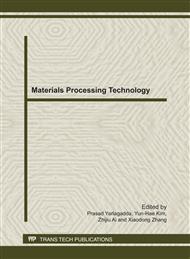p.443
p.448
p.452
p.456
p.460
p.466
p.470
p.474
p.479
The Effect of Single Pulse, Double Pulse and ForceArc MIG Welding Technology on Mechanical Properties of Welding Joint for 5083 Aluminum Alloy Used in High-Speed Train Body
Abstract:
The technology of lightening manufacture for aluminum alloy train body is one key of manufacturing high-speed train . The train body is a whole bearing loading tubular structure which is welded together by the large, hollow, thin-walled aluminum extrusion. Therefore,the demand for welding quality of aluminum alloy train body is very high,and the mechanical properties of joints severely affected the overall strength of welded components. To solve this problem ,we use the 421 EXPERT forceArc MIG of PHOENIX series of German EWM company to perform three types of experiments of single pulse, double pulse, and forceArc welding ,and then effect of three welding methods on mechanical properties of Welding joint for 5083 aluminum alloy used in high-speed train body is compared.
Info:
Periodical:
Pages:
460-465
Citation:
Online since:
September 2011
Authors:
Keywords:
Price:
Сopyright:
© 2011 Trans Tech Publications Ltd. All Rights Reserved
Share:
Citation:


